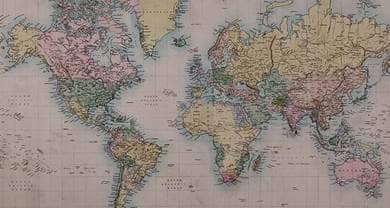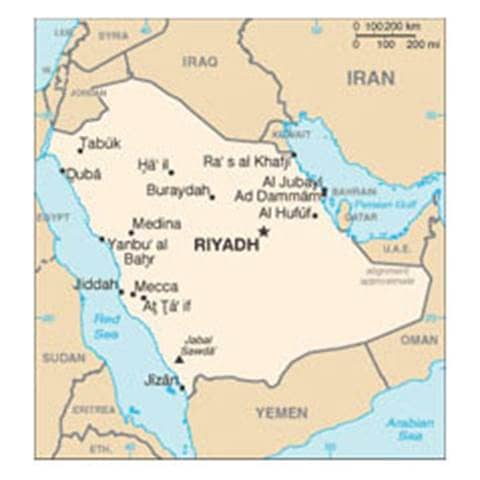- Trending:
- Forgiveness
- |
- Resurrection
- |
- Joy
- |
- Feminism
- |
- Afterlife

RELIGION LIBRARY
Saudi Arabia

The country has an area of 1,225,000 square miles and a population of more than 28.5 million, of whom approximately 22 million are citizens. There is no accurate figure for the number of foreign residents. The Government estimates the foreign population at approximately 6.5 million. Figures from other embassies indicate the foreign population in the country, including many undocumented migrants, is more than 10 million. Estimates provided by other countries' embassies include 1.8 million Indians, 1.5 million Bangladeshis, 1.4 million Filipinos, 1.23 million Pakistanis, 1 million Egyptians, 600,000 Indonesians, 600,000 Yemenis, 400,000 Syrians, 400,000 Sri Lankans, 350,000 Nepalese, 250,000 Palestinians, 150,000 Lebanese, 100,000 Eritreans, and 50,000 Americans.
Accurate religious demographics are difficult to obtain. Approximately 85 to 90 percent of citizens are Sunni Muslims, who predominantly subscribe to the Hanbali School of Islamic jurisprudence. A number of Sunni citizens also subscribe to the other Sunni schools of jurisprudence (the Hanafi, Maliki, and Shafi'i schools).
Although estimates of the Shi'a population range from 5 to 20 percent, more reliable statistics put the figure at 10 to 15 percent. Approximately 80 percent of Shi'a are "Twelvers" (followers of Muhammad ibn Hasan, who they recognize as the Twelfth Imam) and are primarily located in the Eastern Province. Approximately 20 percent of the Shi'a population are Sulaimaniya Isma'ilis, also known as "Seveners" (followers of Isma'il ibn Jafar, who they recognize as the Seventh Imam), and they reside primarily in Najran Province, around the residence of their sect's spiritual leader in Al Mansourah. In the western Hejaz region, there are approximately 100,000 Ashraf (descendants of the Prophet Muhammad) and 150,000 Nakhawala.
Comprehensive statistics for the religious denominations of foreigners are not available. They include Muslims from the various branches and schools of Islam, Christians (including Eastern Orthodox, Protestants, and more than one million Roman Catholics), Jews, Hindus, Buddhists, and others. In addition to European and North American Christians, there are Christian East Africans, Indians, Pakistanis, Lebanese, Syrians, Palestinians, and large numbers of other South Asians residing in the country. Ninety percent of the Filipino community is Christian.
Although exact figures from the Ministry of Islamic Affairs, Endowment, Call, and Guidance (MOIA) were not available, MOIA is responsible for 73,000 Sunni mosques and more than 50,000 Sunni clerics around the country. The two Holy Mosques in Mecca and Medina do not come under MOIA jurisdiction. They are the responsibility the General Presidency for the Affairs of the Two Holy Shrines, which reports directly to the King; its head holds a rank equivalent to a government minister. Thousands of other mosques exist in private homes, at rest stops along highways, and elsewhere throughout the country. No public non-Muslim houses of worship exist, but private Christian religious gatherings take place throughout the country.
In December 2008 the country hosted approximately 2.5 million Muslim pilgrims from around the world and representing all branches of Islam for the annual Hajj. Muslim pilgrims visit the country year-round to perform the Umrah, or lesser pilgrimage in Mecca, and to visit holy sites there and in Medina.
| Population | Population (2009 est.) 28,686,633 |
| Religious Demographics | Muslim 100% |
| Ethnic Groups | Ethnic Groups Arab 90%, Afro-Asian 10% |
| Languages | Languages Arabic |
| Country Flag |  |










